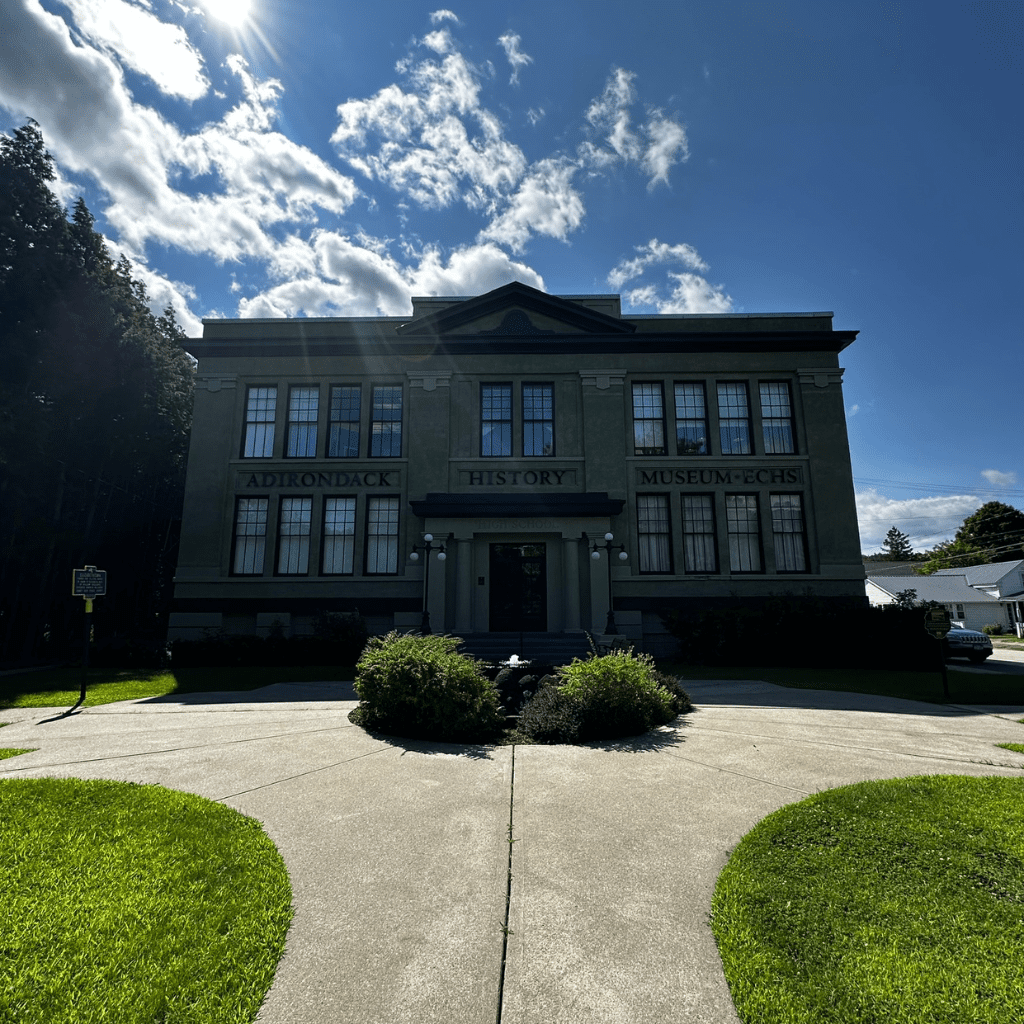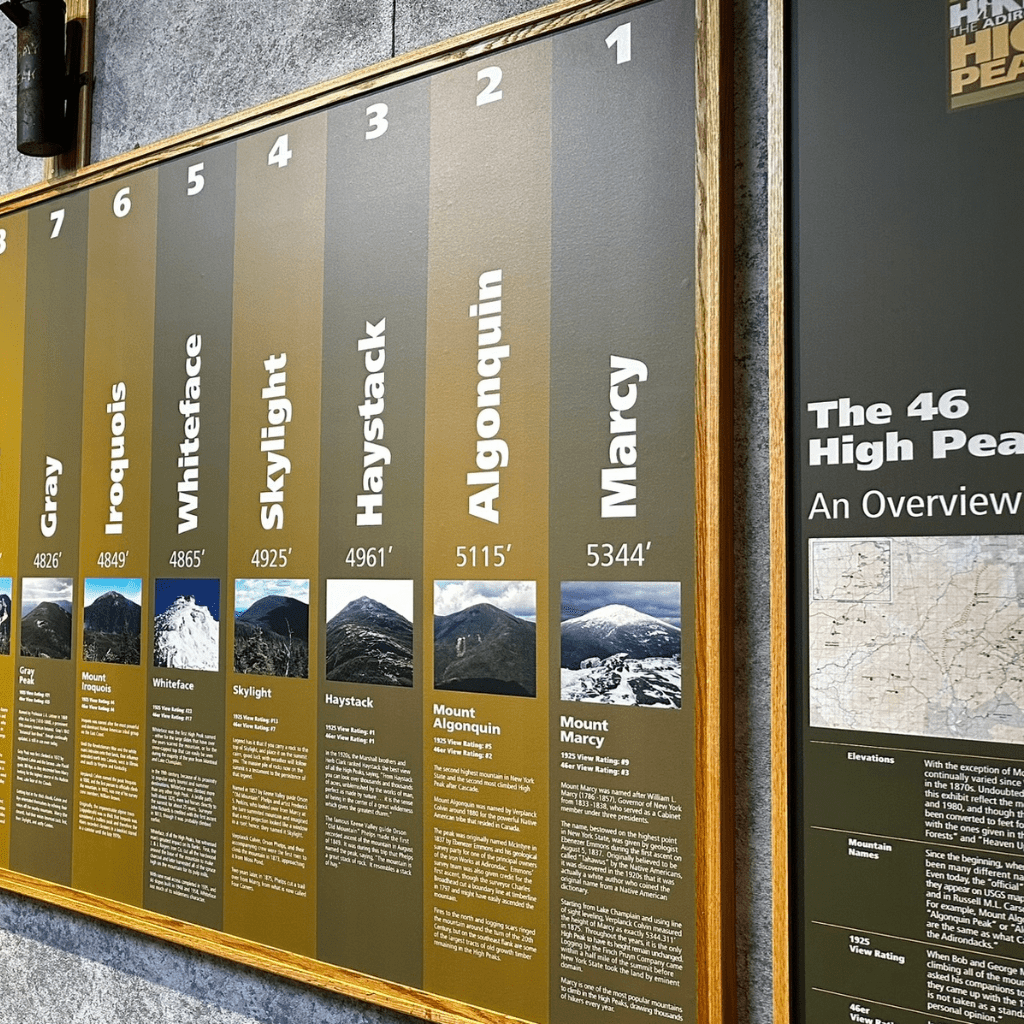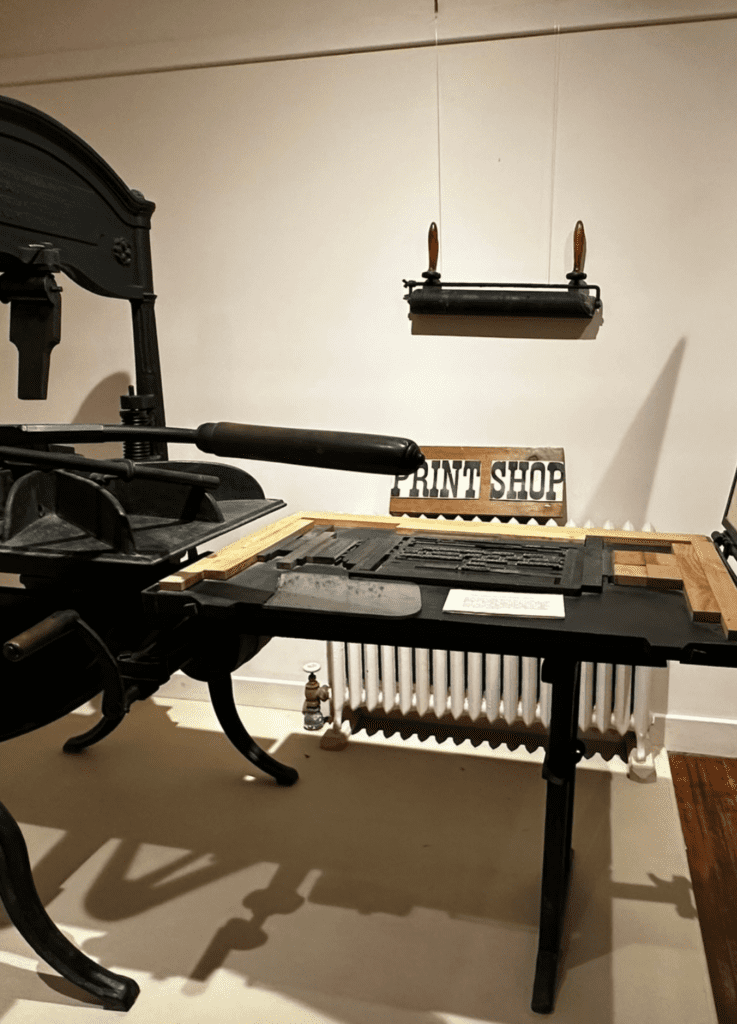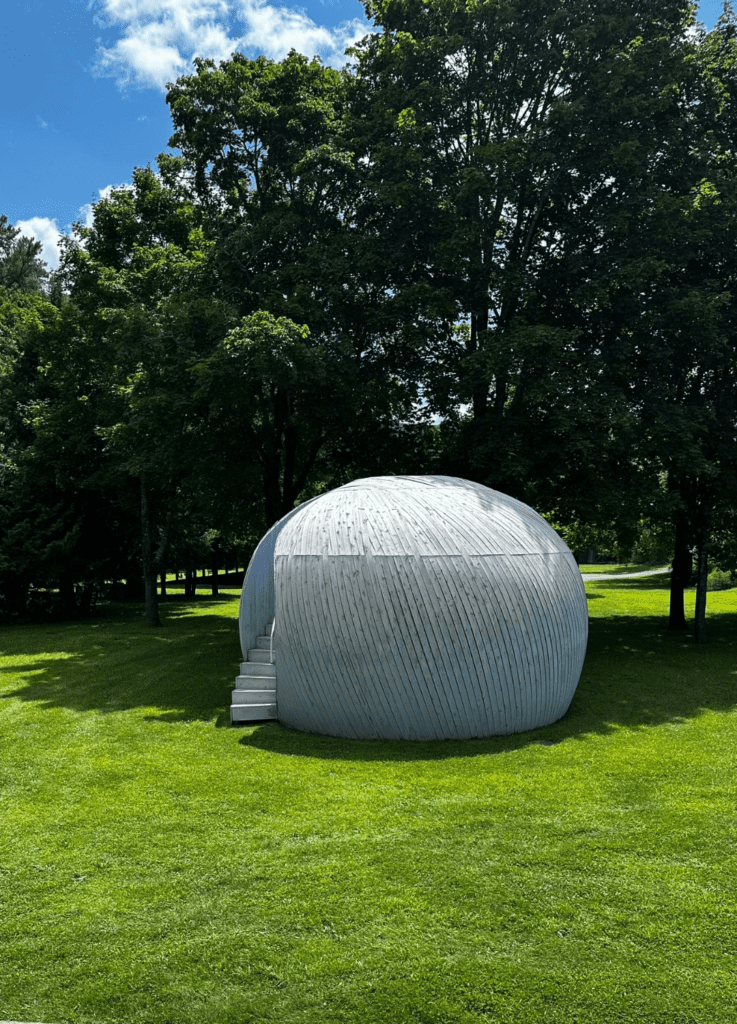Explore the rich past of Essex County
About
Explore the rich past of Essex County at the Adirondack History Museum. The Adirondack History Museum is located in Elizabethtown, NY, a scenic 40-minute drive from the Golden Arrow Lakeside Resort. Established in 1955, the Museum is operated by the Essex County Historical Society and features eight permanent exhibits and one or two seasonal exhibits. The grounds also include a formal colonial garden, maple sugar house, and farmer’s market pavilion.
About the Museum, in their own words:
“The Essex County Historical Society professionally advocates, promotes, preserves and unites those important themes that insure our Essex County history is accessible and survives. Our richest assets are the combination of documents, artifacts and art that with interpretation tell stories that strive to be an accurate, fair and authentic presentation of “The Human Face of the Adirondacks”. Our exhibits, programs and archives intend to be engaging and enjoyable to the public.”
Arrival
The drive to Elizabethtown is beautiful as you take in some of the best views of the Adirondack Mountains (like Marcy, Algonquin, and Colden.) It is an easy drive to the Historical Museum and the building can’t be missed. The Museum is located in a 1916 neoclassical-style former school. If you park on the side street, you’ll also notice a big blue round sculpture in the yard. The Museum has two entrances, one across from the sculpture and one at the front of the building. I went around to the front so that I could take photos of the building, but you can enter through either. Regardless of which door you enter, you’ll walk up a few steps before entering the first floor of the Museum. The Reception Desk is straight ahead in the middle of the room. You can purchase tickets here and then explore the exhibits in any order you choose. Tickets are $7 for adults, $5 for seniors, and $3 for students. Children 6 and under are free. Members are also free and they have various levels of membership. While this is not the order I explored the Museum in, it makes more sense to explain the exhibits by floor level.

First Floor
The first floor is home to the permanent exhibits of Adirondack Suffragists, Hiking in the Adirondack High Peaks, and Worked/Wild, plus the seasonal Logging Exhibit.
Adirondack Suffragists was installed in 2017 for the centennial of women’s suffrage in New York State. It focuses on national, state, and regional dimensions of the women’s campaign. New York was a major national battleground in the fight for women’s rights – i.e. the 1848 Women’s Rights Convention in Seneca Falls. Over the years they have continued to add to the exhibit, including sections on women and the Great War, and the Temperance Movement. This exhibit features a number of photos and articles, as well as a video.

Hiking in the Adirondack High Peaks covers hiking history, the 46ers, and collection items. You can find information and photos of each of the 46 high peaks, including their elevation, 1925 View Rating, and 46er View Rating. There is also information on the evolution of hiking, different hiking clubs, tools that were used, and backstories on the first people to become 46ers.
1925 View Rating: a personal opinion rating done by Bob and George Marshall, and their guide Herb Clark (the first 46ers). When they finished climbing all the mountains they thought to be over 4000′ in 1925, they ranked the views in a secret ballot and came up with this view rating.
46er View Rating: the 46ers were in the process of producing a new book and thought that the 60-year-old+ rating from 1925 needed to be updated. They sent out a questionnaire, then compiled the results and came up with the new rating. This reflected the landscape changes of the High Peaks since the Marshalls and Clark ranked them.



Fun Fact time:
1. Except for Mount Marcy, High Peaks mountain elevations have continually varied since Verplanck Colvin first began recording heights in the 1870s. The elevations in the exhibit reflect the most modern USGS measurements taken in 1979 and 1980 and have been converted from metric to feet for convenience.
2. Since people began naming the High Peaks, there have been many different names associated with most mountains. The “official” names of several peaks sometimes vary from how they appear on USGS maps, online, and in books. Mount Algonquin, for example, is sometimes referred to as “Algonquin Peak” or “Algonquin Mountain”.
3. Both View Ratings ranked Haystack as number one.
4. Bob, George, and Herb climbed their first High Peak, Whiteface, in 1918 and became 46ers in 1925 with Mount Emmons being their last. In the summer of 1921, they ascended 23 peaks, 18 of them trailless and 8 of which had never been climbed previously.
Worked/Wild + Logging
The Worked/Wild Exhibits are across from each other and express pride in this place [the Adirondacks], love of the landscape, and how much the past reflects who the people of Essex County are today. Worked has a number of old tools, including a winnowing machine, hay fork, cantine, and shoes! There is also a video you can watch. Wild features a large map of the Ausable River with prominent landmarks highlighted (Whiteface Mountain, Land of Makebelieve, and local farms), as well as a stuffed bear (and its backstory), plus another video you can watch. The Logging Exhibit can be found on the outside walls of Worked/Wild rooms and features photos, information, and tools.


Second Floor
The second floor is home to the permanent exhibits of Arto Monaco and the Land of Makebelieve, Community Ties, and Firetowers, plus the Rosenberg Gallery and O.B. Brewster Memorial Library.
Arto Monaco (1913-2003) was an artist, theme park designer, toy designer, and cartoonist. His work could be seen at many local theme parks including Santa’s Workshop, Storytown, Frontier Town, Enchanted Forest, and his own Land of Makebelieve. Outside his exhibit, you will be greeted by the Strawberry Roan horse Arto designed. The horse sat out front of his wife’s Strawberry Roan Gift Shop in Wilmington, NY (now the Ausable River Fly Shop.) This exhibit is dedicated to his colorful world and great imagination. It features over 500 artifacts, plus wooden toys, coloring pages, and a dress-up room because he believed that children were meant to play. You can also flip through some of his sketches!


Community Ties is a series of curiosities that have been collected over 75 years. The exhibit features stories of people who have lived/worked in Essex County. In this room, you will see a dentist chair, drill, & compressor from Dr. Manya Jokel Gerson, one of the first female professionals in Essex County, a Piano Case Melodeon that was built between 1861 and 1863 (it is said to be the first piano in Essex County), a 1920s Stage Curtain, a Washington Hand Press (a hand-operated printing press), and a Postal Unit used in Olmsteadville, NY for over 100 years. My favorite thing in this exhibit though, was the piece on Henry Debosnys. Debosnys is allegedly responsible for the death of his first two wives, although never charged. He was however arrested and sentenced to execution by hanging for the murder of his third wife. More of the story can be read in the exhibit. They also have the noose used in his execution, some of his sketches, and his skull on display.




Rosenberg Gallery + Brewster Memorial Library
The library was closed during my visit, so I unfortunately can’t speak on that. I can tell you that the Rosenberg Gallery has been open since 2016 and features exhibitions of historic and contemporary Essex County and Adirondack Artists. The Gallery currently features wildlife photography by Larry Master, which will be on view through October 12, 2024. Larry has served on the boards of various Adirondack foundations including the Adirondack Council, Ausable River Association, and Adirondack Explorer. All Photographs are available for sale through Larry.

The Adirondack Fire Tower Exhibit features an inside and outside component. The exhibit combines photos, text, and maps to explain early fire tower history, locations of existing and past fire towers, and current fire tower issues. You can also head outside and climb a 55-foot fire tower! It was installed in 1989 from the remains of two dismantled, authentic Adirondack Fire Towers.
At the top of the fire tower, you can use the “Fire Finder”, a combined table, map, and pointer. These devices were invented in the early 1900s and used in Adirondack fire towers until 1990 for sighting forest fires from mountaintop perches. Fire Observers used the pointer, made originally of brass and called an alidade, by aiming it at the smoke and reading the map to line up the fire’s location; the Observer then coordinated with other fire tower Observers by telephone to pinpoint, by triangulation, the exact fire location for the fire fighting crews.
Fun Fact: 34 summit towers, out of an original 57, still stand in the Adirondack Park, though none are actively used for spotting fires. This network of towers supported the first organized effort by New York State to protect its forests. From the Museum’s fire tower, you can see Hurricane Mountain, a very popular hike on the firetower challenge.

Lower Level
The lower level is home to the permanent exhibit on Transportation, plus the seasonal Adirondack Northway Exhibit.
The Transportation Exhibit is the longest-running permanent exhibit at the museum. It features classic styles of transportation including an 1887 Concord Stagecoach, a peddler’s wagon, a buckboard wagon, Cutter Sleighs, a hand pumper fire engine, and the “Ironshoes” bobsled.
The Adirondack Northway exhibit showcases the controversies surrounding building the superhighway in the late 1960s, its local and regional highlights, and its long-lasting impact. There is also an interactive map of Essex County in this exhibit where you can push buttons to see different landmarks light up, including the Olympic Sites, Santa’s Workshop, John Brown Farm, and Mount Marcy.


Outside
As mentioned earlier, when you pull up to the museum, you will see a big blue sculpture. This is known as “Blue is the Atmospheric Refraction I See You Through” and was created by Randi Renate. It is “a sculptural encounter in which two viewers have similar, yet distinct, experiences of climbing twin spiraling staircases that are recessed into a larger dome.” This is interactive, allowing you to climb either staircase to the top.
The Colonial Garden on the property was built in 1955 and is an adaptation of a garden enjoyed by King Henry VIII. The purpose of the garden is to give guests a sense of comfort from which to view some of the natural beauty of the nearby Adirondacks as well as a place that takes one back through the centuries. The garden sees over 6,000 visitors a year. The museum also holds Garden Parties featuring music, wine, hors d’oeuvres, and a silent auction, as a fundraiser for supporting and caring for the garden.


I think the Adirondack History Museum is a great family-friendly to-do. You will leave learning something new about your favorite place to visit – the Adirondacks!
More Blogs
45th Anniversary of the 1980 Winter Olympics
Celebrate the 45th Anniversary of the 1980 Winter Olympics! Photo...
Read MoreWhat to do on your 2024 holiday trip to Lake Placid
What to do on your 2024 holiday trip to Lake...
Read MoreWhere to snowshoe around Lake Placid
Where to snowshoe around Lake Placid If you’re traveling to...
Read MoreThe only thing we overlook is the lake
Surrender yourself to the natural and untouched beauty of the Adirondack Mountains at the first resort in the U.S. to receive the Audubon International’s Platinum Eco Rating for Hotels. There are now only six hotels in the United States to obtain this honor! It’s a place to renew yourself on the serene shores of Mirror Lake, and take in the history of the town, just steps away from the famed Olympic Village and the heart of Lake Placid, New York. No other place on earth provides this unique blend of comfort, rejuvenation, or one-of-a-kind experiences. Start planning your stay at the Golden Arrow Lakeside Resort now!



